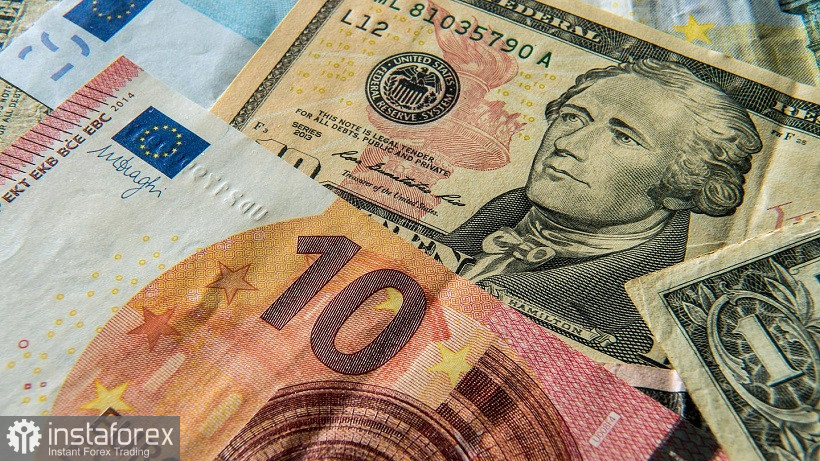Today, the pair has once again tried to show growth. The quote tested resistance at 1.0760, in line with the upper Bollinger band on the daily chart. This week, the pair trades in the 1.0650-1.0750 range. However, against the current background, bulls may well push the price further up. Risk appetite increased amid the cautious FOMC Minutes report. In addition, US Q1 GDP was downwardly revised. Durable goods orders were disappointing as well. Surprisingly, the eurozone saw the release of optimistic macro results. Consequently, the price reached the upper limit of the outlined range and tried to break through 1.0760.

It should be noted that buyers might find it challenging to break and consolidate above the barrier. At the same time, the latest fundamental signals allow bulls to form new corrective waves.
For example, the FOMC Minutes report published two days ago triggered growth in the US equity market. Meanwhile, the greenback came under pressure. On the one hand, the Fed confirmed its hawkish plans. Committee officials support the regulator's decision to raise the interest rate by 50 basis points in June and July. As for a more distant future, the Minutes show that the Fed may pause and see where it stands in terms of monetary policy. In other words, the US central bank remains cautious and may adjust its stance after two more rate-hike rounds. "Many participants judged that expediting the removal of policy accommodation would leave the Committee well-positioned later this year to assess the effects of policy firming and the extent to which economic developments warranted policy adjustments," the report said. Above all else, FOMC members were against raising rates by 75 basis points although such a possibility was actually considered.
Such a hawkish and, at the same time, cautious approach disappointed bulls. At this point, two half-percentage-point increases are expected. In September, however, the regulator could pause to assess the state of the economy and decide on how many more hikes are needed as well as at what pace.
The greenback came under additional pressure from the pessimistic macro reports in the US. In particular, durable goods orders rose by 0.4% in April. Meanwhile, economists had expected a 0.7% increase. In March, the reading came in at 0.8% but was then revised downward to 0.6%. Likewise, economic growth in the US slowed down in the first quarter by 1.5%, slightly worse than the initial forecast of a 1.4% decline, the second estimate showed. This is the worst performance since the second quarter of 2020 when the American economy entered a recession due to the coronavirus pandemic and the economic downturn. Back then, the US economy plunged by almost 32%.
Meanwhile, macro reports in the eurozone were surprisingly optimistic. The latest releases in Germany deserve special attention. Thus, IFO expectations rose to 86.9. The IFO business climate indicator unexpectedly came in at 93, the best result since February. There are no signs of a recession at the moment in Germany, according to IFO economists. The ZEW indicator of economic sentiment for Germany increased to -34.3 in May, beating market forecasts. Germany's gross domestic product grew 3.8% in the first quarter of 2022 from 1.8% in the fourth quarter of 2021.
Biden's and Lagarde's statements also affected the pair's corrective growth. Thus, the US president said he would review tariffs imposed on imports from China. Meanwhile, the ECB's president saw the deposit rate at zero by September.
Despite all the above-mentioned factors, EUR/USD cannot break through the upper limit of the 1.0650-1.0750 range although it has repeatedly tried to do it this week, including today. Fundamental factors can be positive for the pair in the moment. However, in the medium term, they can reverse the situation. According to ING experts, a lion's share of the ECB's monetary policy tightening has already been priced in by traders. Therefore, the pair seems to have limited growth potential when it comes to this fundamental factor.
In the medium term, short positions could be opened with targets at 1.0700 and 1.0650 (Kijun-sen on D1) when the price approaches resistance at 1.0760 (upper Bollinger band on D1).
 English
English 
 Русский
Русский Bahasa Indonesia
Bahasa Indonesia Bahasa Malay
Bahasa Malay ไทย
ไทย Español
Español Deutsch
Deutsch Български
Български Français
Français Tiếng Việt
Tiếng Việt 中文
中文 বাংলা
বাংলা हिन्दी
हिन्दी Čeština
Čeština Українська
Українська Română
Română

